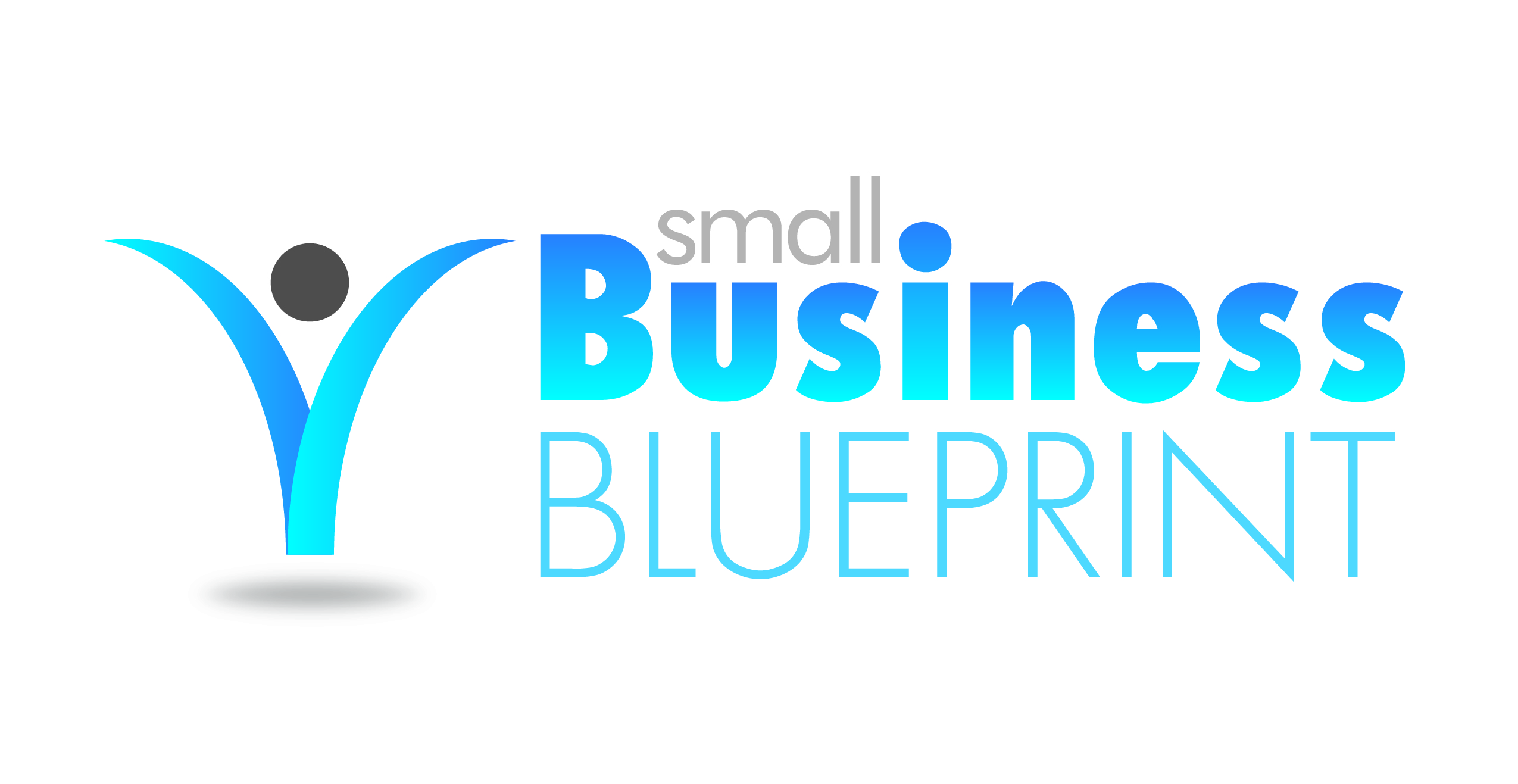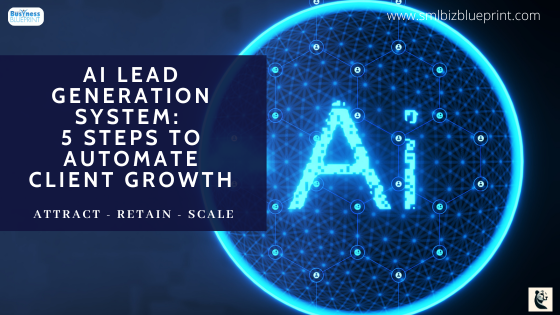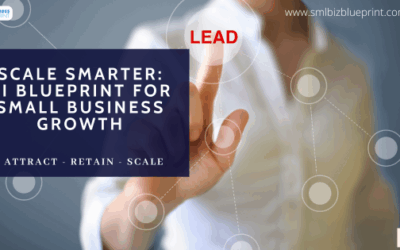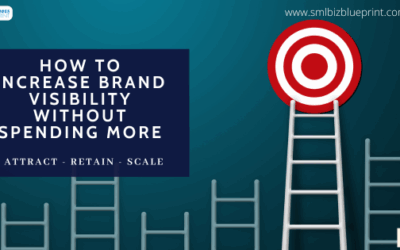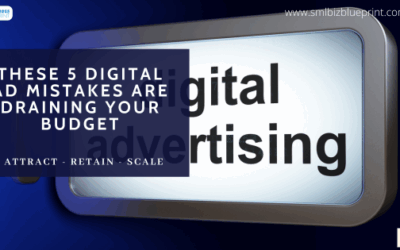Is your team still manually chasing leads? Are you running ads that used to work but now just burn through your budget? Are you spending hours crafting content that barely gets clicks?
If so, you’re not alone—and you’re not the problem. The system is.
Traditional lead generation is collapsing under its own weight. Funnels that once delivered are now stale. Buyers are more distracted. Attention spans are shorter. And the cost of acquiring a single lead keeps climbing. Meanwhile, the businesses scaling fast aren’t doing more—they’re doing it smarter.
They’ve replaced static funnels with something more powerful: AI-powered lead engines that attract, capture, and convert clients around the clock—without adding more hours or headcount.
In this post, we’ll walk you through how to build your own AI lead engine from the ground up. You’ll discover:
Why traditional funnels are outdated
How to shift from a manual process to an adaptive, intelligent system
The 5 critical components every automated lead generation system needs
The tools that power each stage
And how small businesses can compete with bigger players using automation
The best part? Once this system is live, it gets better on its own—learning, adapting, and working for you while you sleep.
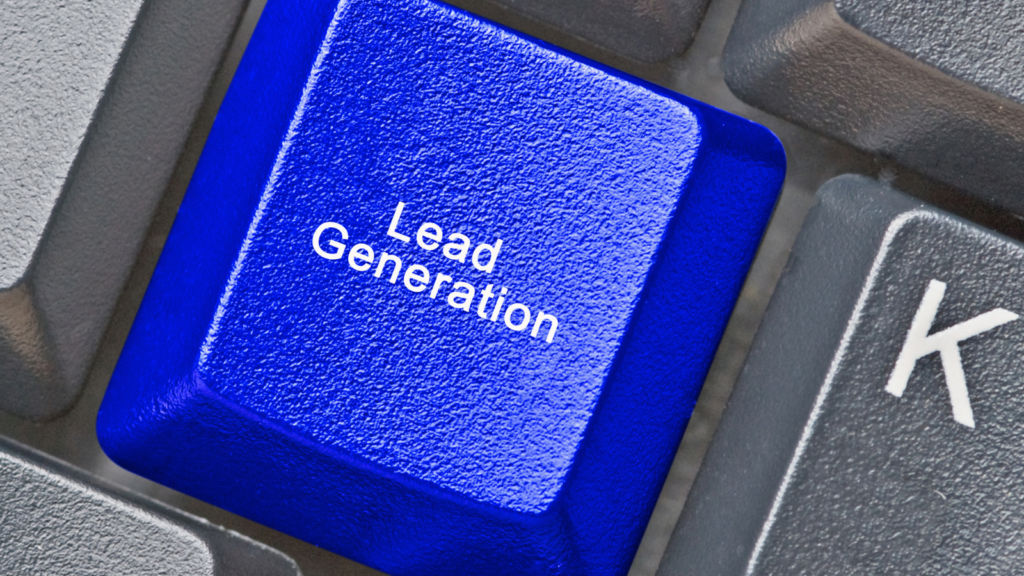
#1 The Problem with Traditional Lead Generation
Let’s be honest—manual lead generation is exhausting.
Cold calls, cold emails, networking events, social media outreach… it’s a grind that doesn’t scale. Even worse, the return on effort keeps dropping.
As attention spans shrink and ad fatigue rises, the gap between effort and results grows wider. What used to work just five years ago barely moves the needle today.
Most funnels were built for a world that no longer exists. They assume buyers move in a straight line—from awareness to interest to decision.
But today’s buyers bounce between tabs, watch multiple videos, and expect a personalised experience from the first click.
In reality, what you’re using might not be a funnel anymore—it’s a leaky bucket.
Here’s what’s really going wrong:
Manual outreach doesn’t scale. You or your team spend hours chasing leads that rarely convert—and that time could be spent on strategic growth.
Stale content fails to convert. Most companies recycle blog posts, email sequences, and webinars built for past buyer behaviors. The result? Lower engagement and higher bounce rates.
Ad costs are rising fast. According to Hubspot, the average cost-per-lead has increased by more than 50% in most industries since 2020. At the same time, click-through rates for standard ads are falling below 0.5%, making it more expensive than ever to get your message in front of the right audience.
Buyers have evolved, but most lead generation strategies haven’t.
That’s why we need to shift from manual funnels to adaptive, AI-powered lead engines—systems that personalise, optimise, and evolve in real time.
The businesses winning today are the ones that stopped running on hustle and started building systems that run themselves.
You’re running ads, testing headlines, and firing off emails at 10 p.m.—but leads still slip through the cracks. You know your team’s stretched thin, but every follow-up feels like one more task on an already-overloaded plate. When responses come in days later, half the leads have gone cold.
That’s not a performance issue. It’s a friction point your system was never built to handle at scale.
#2 The Evolution – From Static Funnels to Smart Engines
If traditional funnels are breaking, what’s replacing them?
The answer: smart lead engines powered by AI.
Static funnels follow a rigid, predefined path: traffic → landing page → email → offer. They assume every lead behaves the same way, follows the same steps, and needs the same message.
But that’s no longer how people buy.
Consumers jump across devices, revisit offers multiple times, and expect instant, personalised experiences at every stage.
The old funnel model is too slow, too linear, and too generic for today’s market.
Modern marketing demands systems that respond to behavior, not assumptions. That’s where AI changes the game.
Why AI Lead Engines Outperform Traditional Funnels
They adapt in real time.
AI-powered systems track behavior—clicks, time spent, scrolling, engagement—and make live decisions. Your funnel becomes a conversation, not a script.
They personalise at scale.
80% of consumers are likelier to buy from brands that offer personalised experiences (Epsilon). AI lead engines dynamically adjust email flows, product suggestions, and messaging based on the individual, not the segment.
They learn and improve without manual input.
Your system becomes smarter with each interaction. It auto-optimizes ads, content, and outreach sequences using feedback loops and data patterns.
They support non-linear buyer journeys.
Whether a user bounces from blog to ad to chatbot, your system stays in sync, guiding them forward intelligently and not losing them in the shuffle.
Funnels vs. Engines: A Quick Comparison
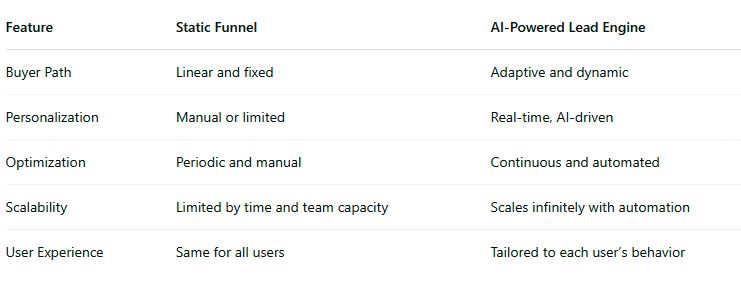
Smart lead generation systems don’t just guide leads—they listen, learn, and respond. As we’ll see in the next section, building one doesn’t require a big team—just the right framework.
Your marketing team built a beautiful funnel six months ago. But now traffic’s down, conversions are stagnant, and they’re unsure what to change—so they keep tweaking the same offer. Then someone suggests, “What if we stop guessing and let data decide what to optimize?
That’s the moment the switch flips—from static strategy to adaptive engine.
#3 The 5-Part AI-Powered Lead Generation System
Now that we’ve identified the limitations of traditional funnels and the power of adaptive engines, let’s break down exactly how to build an AI lead generation system that works 24/7.
This isn’t theory—it’s a practical five-part framework designed to attract, engage, and convert leads using automation and intelligence.
Once implemented, it becomes a self-optimizing client acquisition engine.
- Attract: Capture Attention with Smart Content and AI SEO
The first step is to drive the right traffic. But instead of manually writing blog posts, launching random ads, or guessing what will work, you let AI do the heavy lifting.
Content automation tools like Jasper or Copy.ai generate high-performing blog posts, social captions, and even scripts at scale.
AI-driven SEO platforms like Surfer SEO or MarketMuse analyse search intent, optimise keyword usage, and structure content for top rankings.
A/B ad testing with platforms like AdCreative.ai automatically creates and tests variations to identify winning formats faster.
Stat: Businesses using AI for content creation reduce time spent by 50% and increase content volume by 3X. (McKinsey)
- Capture: Engage Visitors with Smart Lead Magnets and Personalized Landing Pages
Once visitors land, you need to turn attention into action.
Use dynamic lead magnets (like quizzes, calculators, or gated tools) that adapt based on user behavior or source.
Deploy AI-personalized landing pages that change headlines, CTAs, and offers depending on visitor data (referral source, geolocation, behavior).
Example: A visitor coming from a LinkedIn ad might see different messaging than someone coming from a blog. Both pages are relevant but tailored.
- Nurture: Build Relationships with Adaptive Email Sequences
Not every lead buys immediately, so your system must nurture them intelligently.
Create adaptive email flows using platforms like ActiveCampaign or ConvertKit with AI-powered segmentation and behavior-based triggers.
Send content, offers, or case studies based on the lead’s actions—not a static drip campaign.
Score leads automatically and adjust messaging as they engage.
- Convert: Use AI to Personalize the Final Offer and Remove Friction
At this stage, it’s all about making the buying decision frictionless.
Implement AI chatbots (like ManyChat or Drift) that answer objections, recommend solutions, and book appointments without human involvement.
Use smart offer personalisation that adapts pricing, bonuses, or urgency based on user behavior or history.
Example: If a lead has visited your pricing page 3 times, your chatbot can offer a time-sensitive bonus or schedule a demo instantly.
Stat: AI chatbots can increase landing page conversion rates by 20–30%. (Tidio)
- Scale: Optimize and Expand Using Data Feedback and Automation
Once your system is in motion, the final step is to scale it without adding team members or complexity.
Use data feedback loops to automatically improve targeting and messaging.
Auto-clone high-performing funnels and deploy them into new campaigns or verticals with minimal adjustment.
Shift budgets and allocate resources automatically based on performance signals using tools like Madgicx or Revealbot.
Stat: Businesses that automate lead management see a 10% or more increase in revenue within 6 to 9 months. (Forrester)
Bringing It Together
Each part of the system feeds the next, creating a seamless, intelligent pipeline that constantly learns and evolves.
This is how modern businesses generate qualified leads while they sleep—and scale without hiring large marketing teams.
Stay ahead of the curve!
Subscribe to our newsletter and never miss the latest in business growth and marketing strategies.
#4 Essential Tools to Power Your AI Lead Engine
A robust system needs the correct components—and your AI lead engine is only as strong as the tools that power it.
But here’s the good news: you don’t need a massive tech stack or enterprise-level budget to make this work.
Below is a breakdown of recommended tools organised by function and stage in the lead engine.
These platforms integrate well, scale with your business, and automate the tasks that slow you down.
🧲 1. Attract – Content Creation & AI SEO
Jasper.ai – Generate high-converting blog posts, ad copy, social captions, and emails using custom AI templates.
Surfer SEO – Combine AI with real-time SEO data to optimize blog content for rankings and relevance.
AdCreative.ai – Automatically create and A/B test engaging ad creatives and headlines for better click-through rates.
Pro tip: Integrate Jasper with Surfer to create optimised content in one workflow.
📩 2. Capture – Landing Pages & Smart Lead Magnets
ConvertBox – Personalize on-site messages, quizzes, and opt-ins based on behavior and referral source.
Unbounce – Build AI-enhanced landing pages that adjust based on user traits and A/B test without dev support.
Outgrow – Build interactive lead magnets like calculators, assessments, and quizzes that boost conversions.
Fact: Interactive content generates 2x more conversions than static lead forms. (Content Marketing Institute)
🔄 3. Nurture – Email Automation & Lead Scoring
ActiveCampaign – Behavior-based email automation, lead scoring, segmentation, and CRM in one platform.
MailerLite – A leaner alternative for growing teams, with dynamic content and auto-responder workflows.
Instantly.ai – For cold outreach and automated follow-up emails at scale.
Why it works: Personalized email journeys increase customer retention by 74%. (Campaign Monitor)
🤖 4. Convert – Chatbots & Personalized Offers
ManyChat – Automate conversations via Facebook Messenger, Instagram, or your site to drive leads and book calls.
Drift – AI-powered chatbot and conversational sales platform that personalises based on visitor behavior.
Tidio – Combines live chat with AI bots and integrates with CRMs and email tools.
Use Case: Deploy a chatbot that offers a time-sensitive bonus if a user revisits the pricing page multiple times.
📈 5. Scale – Feedback Loops, Budget Shifts & Automation
Zapier – Automate workflows between tools (e.g., send form leads to CRM, trigger email sequences, notify sales).
Pabbly Connect – An alternative to Zapier with lower costs for scaling workflows.
Madgicx or Revealbot – AI ad automation that reallocates budget automatically based on ROAS or conversion goals.
Fact: SMBs that integrate their tools see a 20% faster revenue growth than those with disconnected systems. (Aberdeen Group)
Tool Stack by Business Stage

You don’t need every tool—just the right tools working together. The key is choosing platforms that integrate easily, automate intelligently, and grow with you.
Once connected, your AI-powered lead engine becomes a streamlined, scalable system that delivers results without requiring constant oversight.
#5 Why Small Businesses Need This Now
Let’s cut to the core: Small businesses can’t afford to play the same game as the big players.
You don’t have massive teams, million-dollar ad budgets, or endless time to follow up manually with every lead.
But what you do have—if you set it up right—is leverage. And that’s precisely what an AI-powered lead generation system delivers.
- AI Levels the Playing Field
Big brands rely on brute force: large teams, constant content, and round-the-clock ad spending. Small businesses don’t have that luxury—but you don’t need it.
With AI, automation, and a smart system, you can:
Launch campaigns that run 24/7 without needing a dedicated team
Send personalised content and follow-ups at scale.
Make data-driven decisions in real time.
Stat: 48% of small businesses say automation is critical to their growth strategy. (Salesforce)
- Efficiency Over Effort
Working harder isn’t the answer. The businesses growing the fastest right now aren’t doing more—they’ve built systems that do it for them.
AI handles repetitive tasks like emails, segmentation, and even ad testing.
Smart chatbots convert website visitors while you sleep.
Lead magnets and landing pages adapt automatically based on behavior.
This isn’t about hustle but replacing the grind with a growth engine.
- You Don’t Need a Team — You Need a System
Most business owners delay automation because they assume it’s complicated or expensive.
In reality, the tools are more accessible than ever—and setup takes hours, not months.
Example: A solo consultant set up a lead magnet using Outgrow, connected it to an email sequence in ActiveCampaign, and added a chatbot with Tidio. In 30 days, their email list tripled—and they booked 7 new calls.
You’ve finally hired a part-time marketing coordinator—but the inbox is still overflowing and your landing page hasn’t been updated in three months. You know there’s potential in your pipeline, but your team can’t move fast enough to unlock it. Then you realize: what you need isn’t more people—it’s a smarter, repeatable system.
Automation doesn’t replace your team. It protects them from burnout and frees them to focus on what actually moves revenue.
- Consistency Wins Markets
Even great businesses struggle when they rely on manual, unpredictable efforts.
One missed follow-up, one outdated email, one forgotten retargeting ad—and opportunities slip away.
With an AI-powered system:
- Leads are captured and nurtured automatically.
- Offers are delivered consistently at the right time.
- Your brand stays top of mind without burnout.
Stat: Automated follow-up increases lead conversion by 47%. (Annuitas Group)
Final Word on Urgency
The opportunity isn’t just about saving time—it’s about staying relevant.
The market is shifting fast. Those who embrace AI-driven automation will dominate their niche before others know what’s happening.
The sooner you build your AI lead engine, the faster you’ll separate yourself from the competition—without burning out, hiring a huge team, or guessing what works.
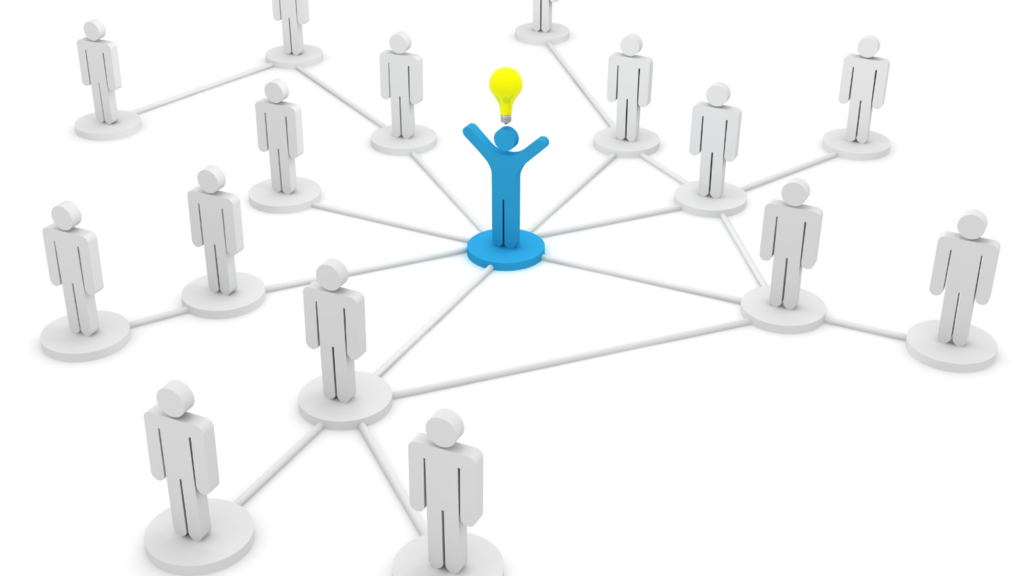
#6 Work Smarter, Not Harder
This isn’t just a tech upgrade. It’s a complete shift in how you grow your business.
The most successful entrepreneurs and business owners don’t succeed because they work more hours—they succeed because they build systems that work for them.
In today’s digital landscape, that system is a self-learning, AI-powered lead engine.
Stop Relying on Tactics. Start Building Systems.
Tactics are short-term plays—ads, campaigns, cold outreach bursts—that burn out fast. But systems create momentum that builds over time.
An AI lead generation system is designed to:
Run around the clock without oversight.
Adapt to changing buyer behavior in real time.
Improve with every lead interaction, email click, or form submission.
When you implement a system that learns, adapts, and scales, your job isn’t to constantly push—it’s to tweak, optimise, and grow.
From Hustle to Leverage
The mindset shift is simple but powerful:
“Don’t ask how you can do more. Ask how you can build something that does it for you.”
With the right tools and framework, your lead gen engine becomes your business’s most consistent and intelligent part.
The Future Belongs to the Automated
In every industry, we’re seeing a clear divide: those who automate and those who fall behind.
Small businesses that embrace AI are gaining a strategic edge—not just in lead generation but in how they manage time, focus, and scale.
This isn’t optional anymore. It’s the new baseline for growth.
Ready to Build Yours?
If you want a system that attracts leads, nurtures them, and turns them into clients—without relying on daily hustle—then it’s time to build your AI lead engine.
Conclusion
Let’s recap what you’ve just uncovered:
- Traditional lead gen is broken. Manual outreach, rising ad costs, and static funnels no longer cut it.
- AI-powered lead engines are the future. These adaptive systems attract, nurture, and convert leads automatically—24/7.
- The 5-part framework works. From attracting attention to scaling with smart data, every step is designed for efficiency and growth.
- You don’t need a big team. Even small businesses can build systems that compete with enterprise-level operations with the right tools.
- This is about leverage, not labor. The smartest businesses are shifting from effort-based strategies to system-based solutions.
If you’re tired of chasing leads and constantly rebuilding campaigns, it’s time to pivot.
With an AI lead generation system, your business can grow more consistently, convert more predictably, and scale more intelligently—with less stress and more freedom.
✅ Ready to Build Your AI Lead Engine?
Whether you want to replace a broken funnel, optimise your current strategy, or start from scratch, we’re here to help.
7 Action Steps to Build Your AI Lead Engine
Audit Your Current Funnel or Lead Gen Process
→ Identify where leads drop off, what’s still manual, and which tools or channels aren’t delivering consistent results.
Ask: Where am I spending time that a system could handle better?
Define Your AI Lead Engine Goals
→ Are you trying to increase lead volume, qualify leads better, or reduce manual work? Clarify the outcome so your system has a measurable target.
Choose One Core Traffic Source and Automate Content
→ Whether it’s organic SEO or paid ads, pick your top-performing traffic source and use AI tools like Jasper + Surfer SEO or AdCreative.ai to generate optimised content quickly.
Install a Smart Lead Magnet and Personalized Landing Page
→ Use tools like ConvertBox, Unbounce, or Outgrow to create dynamic opt-ins and landing pages tailored to visitor behaviour.
Set Up Adaptive Email Nurturing
→ Create segmented email flows that react to what your leads do, not what you assume they want. Tools like ActiveCampaign or MailerLite with behavior tracking make this easy.
Deploy an AI Chatbot for Real-Time Conversions
→ Install a bot (Tidio, Drift, or ManyChat) on your landing page or pricing page to capture intent-driven leads and answer questions instantly.
Automate and Optimize with Feedback Loops
→ Connect your stack with Zapier or Pabbly, monitor conversion data, and schedule monthly reviews to optimise what’s working and clone what converts.
Pro Tip: Start lean—just 3–4 connected tools can build your first working version. Then layer in more AI and automation features as you grow.
Don’t miss a beat in your business growth journey! Join Pulse and stay ahead with expert tips and actionable advice every month.
Subscribe to Pulse Today
FAQs
Q1: What is an AI lead engine and how is it different from a traditional sales funnel?
A1: An AI lead engine is a self-optimizing system that uses automation and artificial intelligence to attract, nurture, and convert leads. Unlike static funnels, it adapts in real time based on user behavior and data feedback, creating a more personalised and efficient lead journey.
Q2: Do I need a big budget or a tech team to implement an AI lead engine?
A2: No. Small businesses can get started with under $300/month using tools like Jasper, ActiveCampaign, and ConvertBox. Many platforms are designed for non-technical users and come with plug-and-play automation features.
Q3: How long does it take to build and deploy a basic AI-powered lead generation system?
A3: A lean version can be set up in a few days. Most businesses can implement the attract–capture–nurture cycle within 1–2 weeks using pre-built tools and templates.
Q4: What are the most important tools for building an AI lead engine?
A4: Essential tools include:
Content creation: Jasper, Surfer SEO
Landing pages: Unbounce, ConvertBox
Email automation: ActiveCampaign, MailerLite
Chatbots: Tidio, Drift, ManyChat
Workflow automation: Zapier, Pabbly Connect
Q5: Can this system work for service-based businesses or just e-commerce?
A5: Absolutely. AI lead engines are ideal for coaches, consultants, SaaS providers, agencies, and service businesses. If your goal is to generate qualified leads and convert them into clients, this system applies to you.
Q6: How does AI help with personalisation and conversion?
A6: AI analyses user behavior in real time and adjusts messaging, email sequences, offers, and chatbot responses accordingly—leading to more relevant experiences and significantly higher conversion rates.
Q7: What’s the first step I should take if I want to build an AI lead engine?
A7: Start by auditing your current lead generation process. Identify manual tasks, weak conversion points, and outdated content. Then focus on automating one phase at a time—beginning with content and lead capture.
Other Articles
Cold Emails Not Getting Replies? Try These 5 AI Tools Now
How To Use AI to Improve Product-Market Fit Faster and Smarter
Is Your Cold Email Strategy Outdated? Here’s How AI Fixes It
